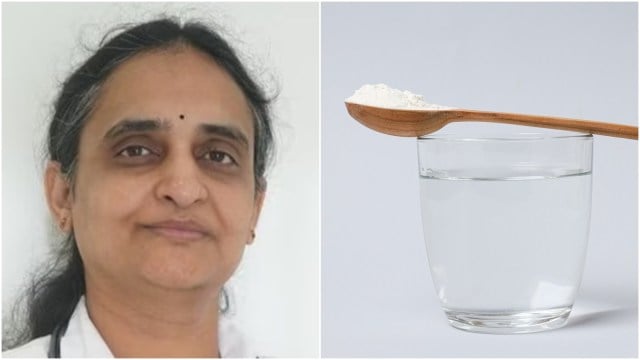Dr Sivaranjani, who has been campaigning since 2016, told indianexpress.com that the order must be implemented immediately to prevent misleading consumers.

“First things first. The order has to see a speedy implementation. The companies must not sell these liquids in pharmacies, hospitals, schools, supermarkets, or online. Labels have to be changed. Even after changing the labels, you cannot sell any of these liquids in pharmacies, hospitals, or schools. All of these leading brands sell high-sugar liquids in the name of ORS,” she said.
Story continues below this ad
The battle continues
Dr Sivaranjini, however, cautioned that “the battle is not over yet.” Questioning the FSSAI’s role in ensuring stocks were removed from shelves, she highlighted that JNTL (Johnson & Johnson subsidiary) secured an interim stay from the Delhi High Court on October 17. The court gave one weeks time for JNTL to give its representation to FSSAI. We haven’t yet heard from the FSSAI about it’s decision on the representation. Today is already the 25th of October.
“The order was given on October 15, but stocks continued on shelves till the 17th. Isn’t it FSSAI’s responsibility to ensure their removal?” she asked. She added, “So, has JNTL given its representation to FSSAI, and what has FSSAI decided? These are the questions that need answers.”
The reason behind the fight
Dr Sivaranjini went viral recently with an emotional video celebrating the October 15 order. The victory came after a Public Interest Litigation and numerous challenges. She stressed that low-sugar ORS is also not ideal for rehydration, reinforcing the need for strict enforcement.
“The CDSCO and the Ministry of Health and Family Welfare must ensure that only WHO-recommended ORS and plain water are available in pharmacies, hospitals, and schools. Otherwise, companies will continue selling high-sugar liquids under new labels, and gullible consumers—especially children—will continue to suffer,” the Hyderabad-based doctor said.
Story continues below this ad
Her campaign began after observing children facing acute health issues, and in some cases, dying from diarrhea after consuming high-sugar ORS. In 2022, she filed a PIL in the Telangana High Court challenging the sale of beverages falsely advertised as ORS despite not meeting WHO-recommended electrolyte and glucose standards.
 Here’s how high sugar ORS affect children (Photo: Pixabay)
Here’s how high sugar ORS affect children (Photo: Pixabay)
What WHO recommends vs reality
According to WHO, standard ORS should have a total osmolarity of 245 mOsm/L, with 2.6 g sodium chloride, 1.5 g potassium chloride, 2.9 g sodium citrate, and 13.5 g dextrose per litre. Many marketed ORS products, however, contain up to 120 g sugar per litre—almost 90% added sugar—with inconsistent electrolytes: 1.17 g sodium, 0.79 g potassium, and 1.47 g chloride per litre, Dr Sivaranjini explained.
“Only WHO-recommended formulas must be sold, with widespread public awareness through print, social media, and TV,” she added.
Deceptive labelling puts children at risk
“The misleading labels make people think they are giving something healthy to rehydrate their child, but high sugar worsens diarrhea. Sometimes, children succumb very fast. Out of 100 deaths in India in under-five children, 13 are due to diarrhea. It’s criminal,” she said.
After the order, parents have been visiting her clinic to express gratitude. “They share how their child suffered from drinking these liquids. I’ve witnessed so much pain. That’s why I took on a conglomerate like Johnson & Johnson and publicly called them out. How dare they do this to our children?” she said.
Story continues below this ad
Reflecting on her eight-year journey, Dr Sivaranjini said, “An association is supposed to do this. They mocked me, sidelined me, and continued taking funds from these companies. But despite the pressure on me, my family, I never thought of backing out.”
DISCLAIMER: This article is based on information from the public domain and/or the experts we spoke to. Always consult your health practitioner before starting any routine.



 Here’s how high sugar ORS affect children (Photo: Pixabay)
Here’s how high sugar ORS affect children (Photo: Pixabay)

























